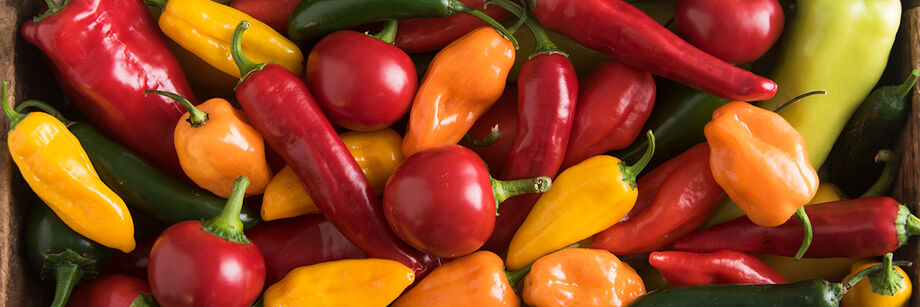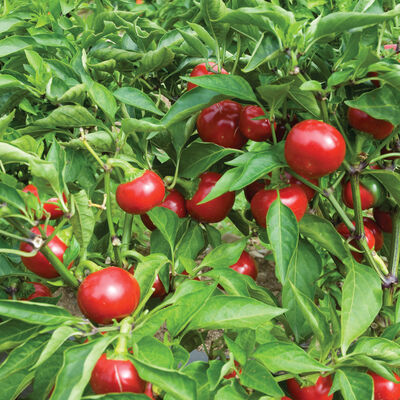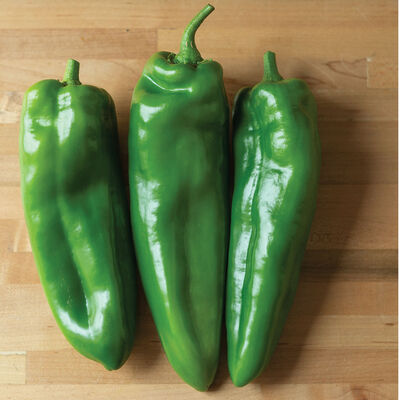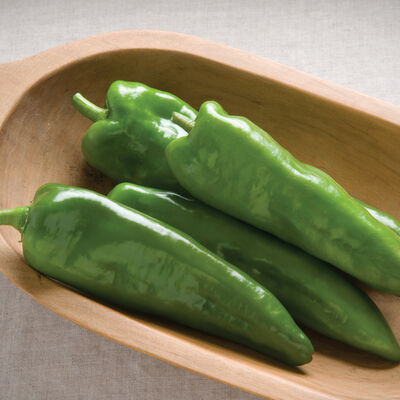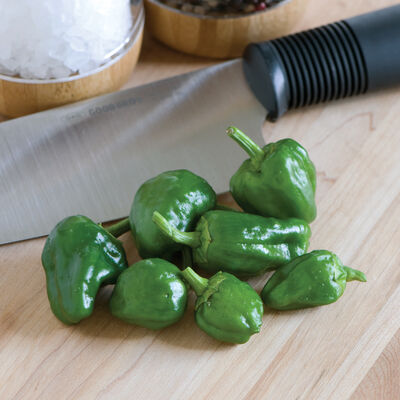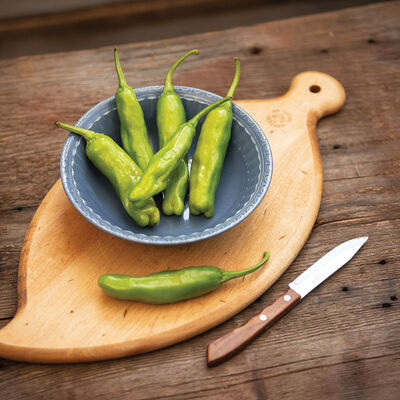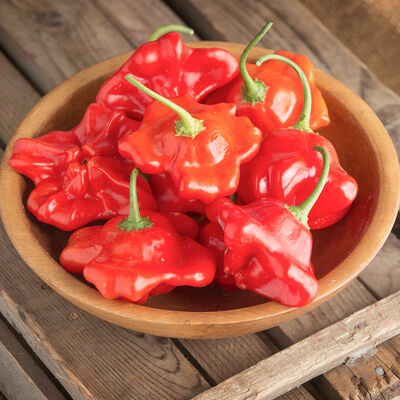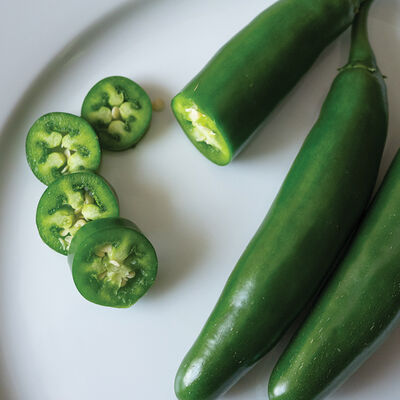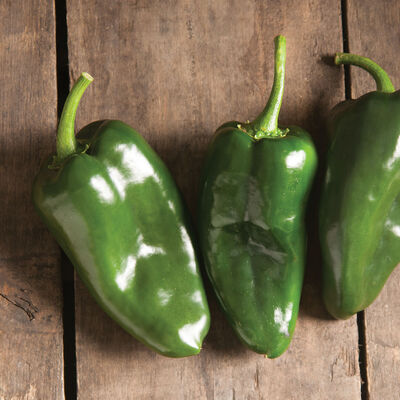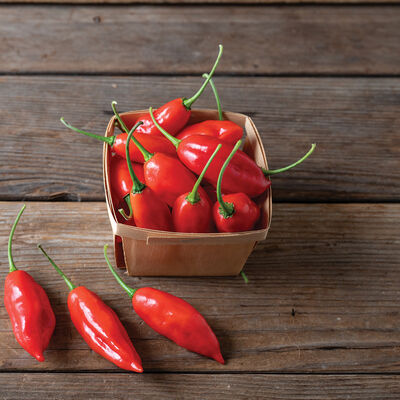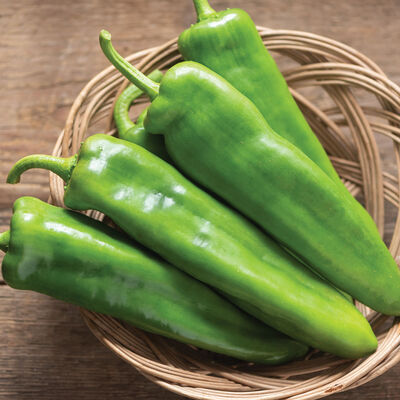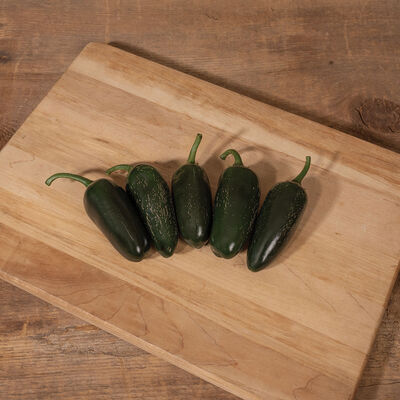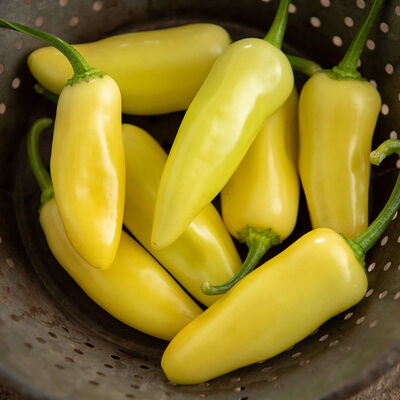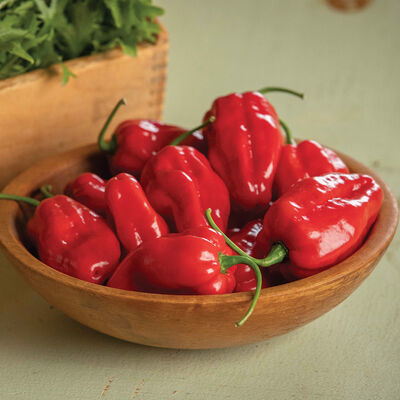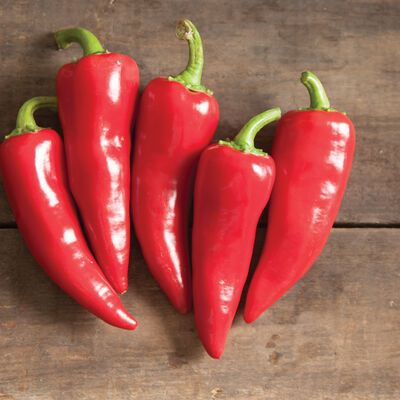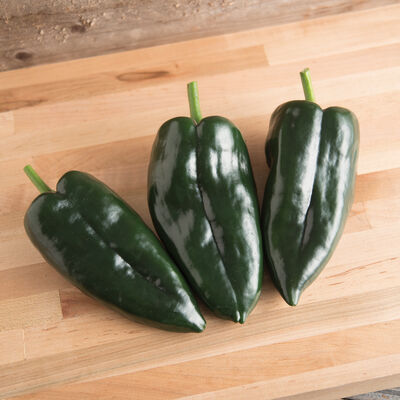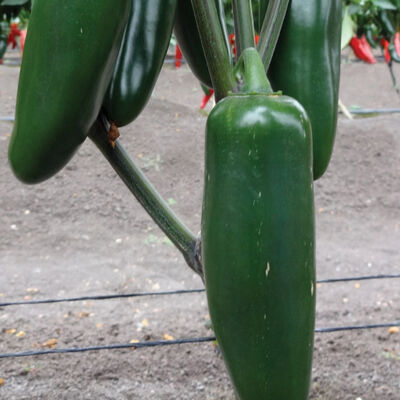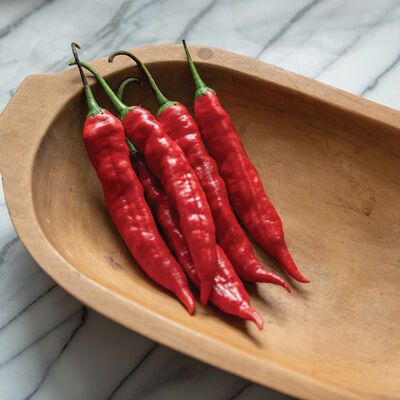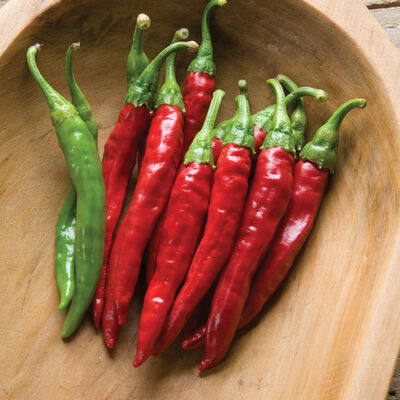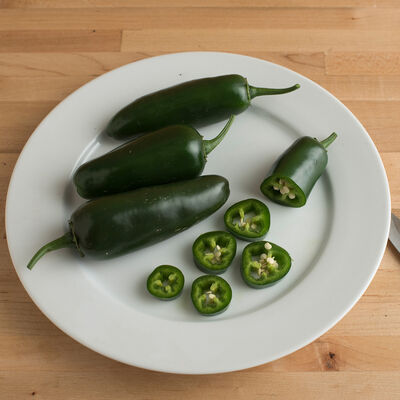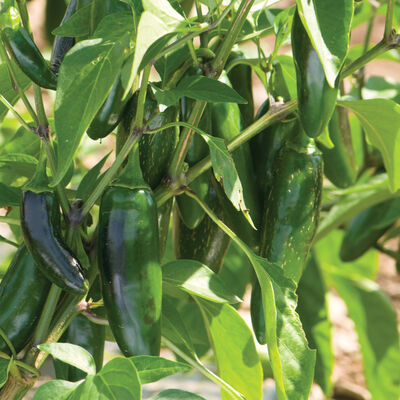Highlander
Organic (F1) Anaheim Pepper Seed
Bastan
Organic (F1) Poblano Pepper Seed
Hot Paper Lantern
Organic Habanero Pepper Seed
Flaming Flare
(F1) Fresno Pepper Seed
Baron
(F1) Poblano Pepper Seed
El Jefe
(F1) Jalapeño Pepper Seed
Hot peppers (also called chili peppers) come in all shapes, sizes, colors, and flavors. They are an essential ingredient in specialty and ethnic cuisines, eaten fresh or dried, or fashioned into decorative ristras or wreaths.
Hot Pepper Heat Levels
The level of intensity—from mild to mouth-blistering super-hot peppers—is measured using the Scoville scale:; the higher the number, the hotter the pepper. Johnny's shorthand for heat scale is 1 to 5 small pepper symbols, with 5 being the hottest.
- Super Hot Peppers: if you are looking for 5-chili-pepper heat, we recommend ‘Habanero’, ‘Helios’, or ‘Hot Paper Lantern’.
- Mild Hot Peppers: the mildest hot peppers we offer include our Aji pepper, ‘Mojo’; Anaheim peppers ‘Charger’, ‘Highlander’, and ‘Spitfire’; Shishito ‘Shishimai’; the Bishop’s Crown ‘Mad Hatter’; ‘Padron’; and our Pepperoncini ‘Paisan’.
Choosing Hot Pepper Types & Varieties
- Learn about different hot pepper types, their traditional uses, and our variety recommendations in our article Johnny’s Hot Pepper Palooza: 10 Types of Chili Peppers to Bring the Heat to Your Harvest
- Container growing: for those growing hot peppers in containers, we recommend ‘Hot Paper Lantern’ (Habanero).
How to Grow Hot Peppers
- Pepper Key Growing Information: a simple overview of essential growing information.
- Field-Grown Pepper Production Tech Sheet (PDF): an in-depth growing guide from seeding to harvest.
- Growing Tips for Successful Pepper Seedlings: tips on successfully germinating pepper seeds and growing and transplanting healthy seedlings.


